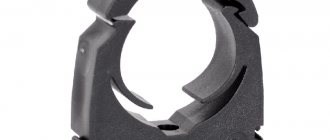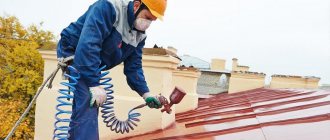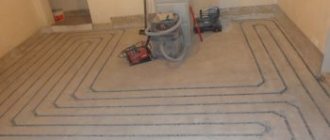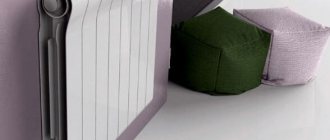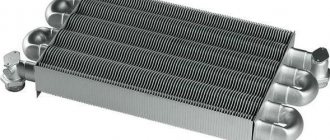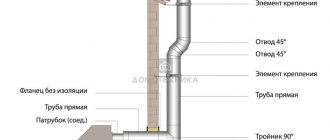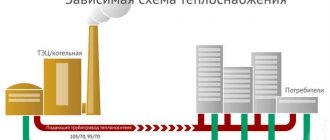When it comes to installing or reconstructing a utility system, the question arises as to which pipes are best to use. Today there is a wide range of such products on the market. They are made from materials such as copper, steel, aluminum, metal-plastic and polymers.
The most expensive material is copper pipe. Therefore, in order to save money, it is used extremely rarely. But there are exceptions. Far-sighted people opt for a copper pipe. And this is not surprising. After all, with its help you can build a strong and durable pipeline that has high performance characteristics.
Variety of copper products
Copper pipes are classified according to different criteria. One of the main ones is the method of their manufacture. According to this criterion, products are divided into the following types:
- Unannealed copper pipes. Manufactured from pure metal by rolling or stamping. The pipes have high strength and can easily withstand pressure of 450 MPa. There are some drawbacks to using this method. The result is a material with reduced ductility, which somewhat limits its scope of application.
- Annealed. Pipe processing is carried out using a special technology. Its essence is to heat the material to 700 degrees and then cool it. Cooling is carried out gradually. As a result of this treatment, copper products lose strength. In return, its plasticity increases. Due to this feature, copper pipe is widely used for the construction of pipelines that have a complex configuration.
According to the standards, copper pipes are manufactured in three types, which have characteristic differences in terms of mechanical and operational properties. So, depending on the degree of hardness, copper products are divided into the following types:
- Solid. The products are widely used for pipeline construction, which must have high strength. The distribution of pipes during the installation process is carried out only by preheating. The pipeline may have numerous turns. To bend the pipe at the selected angle, you need to use a pipe bender.
- Semi-solid. Copper pipes of this type can easily withstand distribution if the diameter is increased by 15%. The product has greater ductility than the previous material. But, nevertheless, for bending you need a pipe bender.
- Soft pipes. Able to withstand distribution when the diameter increases by a quarter. In this case, ruptures and cracks do not occur. The product is easy to bend. To do this, you do not need to heat the material. Soft copper pipes are widely used for heating and water supply systems. They have also found wide application in laying heated floors.
Copper pipes are also classified according to their cross-sectional shape. They come in round or rectangular shapes. The latter option is much more expensive. Rectangular pipes are used for the manufacture of special conductors in electrical equipment. Also, copper pipes can have different wall thicknesses (0.6 - 3 mm) and diameters (12 - 267 mm). Products with certain parameters are used in different areas. Thus, for the installation of a gas pipeline, pipes are used whose wall thickness is 1 mm, and in plumbing - 2 mm.
Sections and dimensions of copper pipes
The high malleability of copper allows you to make a product of almost any shape from this metal. And even the outdated regulatory document for copper pipes - GOST 617-19 - amazes the imagination with the abundance of standard sizes. In the new GOST 617 of 2006, the assortment of copper pipes includes about 130 units of the assortment with original cross-sectional dimensions.
Moreover, unlike the first GOST of the 20s of the twentieth century, in the new regulatory document all dimensions are indicated not in inches, but in millimeters. For example, instead of such a product range as a 3/8-inch copper pipe, a 10-millimeter pipe appeared. In addition, previously unprecedented sizes appeared in the new GOST, for example, a 1/4-inch copper pipe was replaced by two products at once - pipes with a diameter of 6 and 7 millimeters.
The specific dimensions of copper pipes depend on the method of manufacturing the product. Thus, round copper pipes obtained as a result of cold deformation of the workpiece have a diameter from 3 to 350 millimeters. The number of standard sizes of rolled pipes exceeds seven dozen. And this is only if you take into account the outer diameter. The wall thickness of such products ranges between 0.8 and 10 millimeters.
The dimensions of welded products, which include rectangular copper pipes, are smaller. The diameter of such products starts from 30 millimeters and ends at 280 millimeters. The number of products with the original size of the outer diameter in the welded assortment is approaching 50. The wall thickness in this case can be more significant: from 5 to 30 millimeters.
The length of rolled pipe depends on the diameter. And pipes with a diameter of up to 18 millimeters are produced in the form of measured sections of 1-6 meters (in increments of 0.5 meters) or coils with a total pipe length of 10 meters. Larger pipes are produced in the form of measured or unmeasured sections, the length of which ranges from 1.5 to 6 meters.
Of course, the indicated dimensions are typical only for domestic products, but copper pipe KME (a well-known brand from Germany) may have slightly different dimensions. After all, the European Union has its own quality standards.
However, when joining pipes, it does not matter at all what size the product being joined will be. The installation technology depends on other reasons. And what these reasons are will become clear to you after studying the next paragraph.
Copper products with insulating coating

Among other things, copper pipes may have an additional insulating layer. Depending on this, they are divided into several types:
- Products with foam insulation based on rubber, polyurethane foam and polyethylene foam. Such pipes are used to reduce heat loss in heating and hot water supply systems. The thickness of the insulating layer will reach 3 cm.
- Copper pipes with a polyethylene coating, the thickness of which reaches 2.5 mm. Products often have a diameter of 12 – 54 mm. Often used in heating and cold water supply systems.
- Products with polyethylene insulation up to 3 mm thick. Pipes are laid using a hidden method in a monolithic structure. The product has design features that allow you to maintain the integrity of the pipeline during temperature fluctuations.
Copper pipes are not subject to corrosion processes. Therefore there is no need to apply a protective layer. But, as for additional insulation, it will not be superfluous, especially when it comes to the construction of a heating and water supply system. Especially often, such pipes are used for laying external networks that are subject to severe loads under the influence of the external environment.
Labeling and cost
Heating pipes are manufactured and marked in accordance with GOST standards. For example, products with a wall thickness of 0.8–10 mm are manufactured according to GOST 617-90 standards. Another designation concerns the purity of copper, regulated by GOST 859-2001. In this case, the marks M1, M1р, М2, M2р, М3, M3 are allowed.
From the markings indicated on manufactured products, you can find out the following information:
- Cross section shape. They are designated by the letters KR.
- Length - this indicator has different markings. BT - bay, MD - dimensional, KD - multiple dimension.
- Method of manufacturing the product. If the element is welded, the letter C is indicated on it. On drawn products, the letter D is indicated.
- Special operational features. For example, increased technical characteristics are designated by the letter P. High ductility - PP, increased cutting accuracy - PU, accuracy - PS, strength - PT.
- Precision manufacturing. The standard indicator is denoted by the letter N, the increased indicator by P.
To visually understand how to read the markings, you need to understand a simple example - DKRNM50x3.0x3100. Explanation:
- It is made of pure copper, designated as M1.
- The product is stretched.
- The shape is round.
- Soft.
- External diameter - 50 mm.
- Wall thickness - 3 mm.
- Product length - 3100 mm.
European manufacturers use a special marking system, DIN 1412. They apply the designation EN-1057 to elements of water supply and heating systems. It includes the number of the standard according to which the pipes are manufactured, and an additional element included in the composition - phosphorus. It is needed to increase resistance to rust.

Copper pipes at the factory
Advantages of copper products
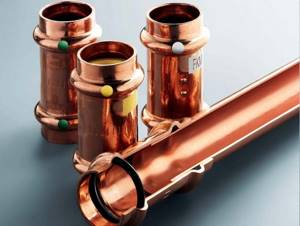
Due to their performance properties, copper pipes are widely used for transporting various liquids. Among the advantages of such products are:
- Plasticity and strength. Copper products have high strength and ductility. At low temperatures, these properties increase significantly. This makes it possible to use a copper pipeline for transporting non-freezing liquids.
- Resistant to sudden temperature changes. Copper pipes do not lose their performance properties at extreme temperatures. This also applies to high blood pressure. Such pipes can withstand a load of 400 atmospheres.
- Slight thermal expansion.
- The versatility of the material. For the construction of one or another utility line, you can use pipes with a small wall thickness. So, for example, if we take steel or plastic analogues, then to solve a similar problem we needed products whose wall thickness was several times greater.
- Resistant to chlorine and other chemicals that may be contained in the transport fluid. Upon contact with copper, an oxide is formed, which extends the life of the product.
- Copper pipes are not afraid of ultraviolet rays, chemically aggressive substances and corrosion. Thanks to these properties, the service life of the pipeline can reach 100 years or more.
- Copper inhibits the development of bacteria, which makes the pipeline safe.
- The inner walls of copper products have a smooth surface. Thanks to this, pipes with a small diameter can be used to construct the pipeline. At the same time, throughput is at a high level.
- Dismantled copper pipes can be reused to construct a new heating or water supply system pipeline.
- Copper pipes have an attractive appearance. This makes it possible to abandon the installation of decorative boxes. The products themselves can be used as a decorative element.
Due to the presence of such advantages, copper pipes are especially popular among professionals and are used in various fields.
Disadvantages of copper and products made from it
Of course, like any other building material, copper pipes have some disadvantages, among which are:
- High cost of copper products.
- Quite high electrical conductivity of the material. As a result, the pipeline may suffer as a result of the influence of stray currents on it.
- When passing products through a wall, special protective covers must be used. This is done in order to protect the pipeline from the negative effects of structures.
- Copper and aluminum products cannot be used simultaneously in the same pipeline. This may cause galvanic corrosion.
- If we are talking about steel pipes, then they should be located in front of copper products. This will reduce the risk of corrosion processes.
Quality proven over 5 millennia
Copper is one of the most reliable and durable metals. The earliest metal water pipes were found in Egypt. Fragments of the first pipe designed to drain rainwater were also found there. It consisted of links made of sheet metal. No rivets, folding or soldering were used to connect the pipe pieces. They were connected “overlapping”: the fragments were narrowed at one end, each link was inserted and securely fixed into the previous one. The estimated time for the creation of such a pipeline is 2500 BC. e.
Already in the 2nd century BC. e. Long water pipelines appeared in Egypt. Just like the first water supply system, they were built from copper pipes. But in the 2nd century BC. the water in them was transported under pressure from reservoirs and reservoirs towering above the area.
Since then, plumbing systems have been modified several times and other materials have been used. But in the middle of the 19th century, Europe returned to its roots; they began to use copper pipes, which are still in high demand today.
Scope of application
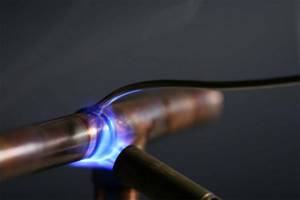
Copper pipes have many advantages, which has made it possible to use them in various fields. So, the products are used:
- in heating and water supply systems;
- in high pressure systems for oil supply;
- for transporting compressed air and gas;
- as freon tubes in refrigeration systems;
- for condensate drainage;
- in fuel systems;
- in air conditioning systems;
- for connecting various equipment.
Rules for selecting pipes for various systems
Each pipeline has special characteristics, so when choosing pipes, all parameters should be taken into account.
Selection of pipes for water supply and wastewater systems
For the water supply system, round pipes with a diameter of 8 mm - 22 mm are mainly used. The wall thickness of such pipes does not exceed 1 mm.
To determine the optimal outer diameter of copper pipes for an indoor water supply system, experts use a complex mathematical formula. A simpler way to determine the diameter is as follows:
- if the pressure in the water supply system exceeds 3 atmospheres, then the minimum diameter is 8 mm;
- if more than one water tap is connected to the collector, then the minimum pipe diameter is 15 mm;
- if the water supply system is connected from a central collector, then the first connecting copper pipe with a diameter of 20 mm is installed;
- if water is supplied to the system under a pressure of less than 2 atmospheres, then the diameter of the installed pipes increases accordingly by one standard size, that is, instead of 8 mm, 10 mm should be used and so on (table of standard sizes below);
- if the length of a private water supply from the point of entry to the points of consumption is more than 20 m, then in order to obtain normal water pressure in all devices it is necessary to increase the nominal sizes of the pipes by one standard size.

Standard Typical Parameters of Copper Pipe
For drainage systems, pipes with a diameter of 32 mm to 42 mm are used.
Selection of pipes for the heating system
To calculate the diameter of the pipe in heating systems, the following parameters are used:
- pipeline layout;
- pipe resistance coefficient;
- speed of coolant movement in the system;
- diameters of inlet and outlet holes.
It is almost impossible to determine the diameter of the pipes on your own due to the complexity of the calculations, so to determine the parameter you can use the table below or the calculation method.

Calculation of the optimal pipe diameter for the heating system
The diameter of the pipe in the heating system cannot be greater than the outlet diameter of the heating equipment.
Copper pipes in the heating system are described in detail in the video.
Selection of pipes for gas supply
Depending on the pressure in the system, gas pipelines are divided into the following types:
- with low pressure (less than 0.005 MPa);
- with average pressure (0.005 MPa - 0.3 MPa);
- with high pressure (more than 0.3 MPa).
Copper pipes are allowed to be used exclusively for the installation of gas pipelines with low and medium pressure, that is, for domestic gas pipelines.
We recommend: What is a bithermal heat exchanger and its pros and cons
According to regulatory documents, copper pipes are used for pipeline laying:
- with a diameter of no more than 15.9 cm;
- wall thickness up to 5 mm.
A more accurate calculation of the diameter is made exclusively by specialists.
Features of installation of copper pipelines
Before proceeding with the installation of the copper pipeline, it is necessary to take measurements and appropriate cuts. Here it is worth making sure that the cut is even. This result can be achieved using a special pipe cutter. The pipes in the main are connected by soldering or pressing.
The most common option is capillary soldering. With its help, you can achieve high reliability and tightness of connections. This method is often used to join rectangular copper pipes. In the process of capillary soldering, sockets and fittings are used. This option is ideal for constructing a pipeline that will be used at high temperatures.
As for pressing, they are performed using various fittings. This is especially true for self-fixing and compression products. In addition, during the construction of the pipeline, compression clamps and special flanges are used. The connection by pressing is used in those places where the pipeline will be exposed to open fire.
Copper pipe fittings

Crimping and solder fittings are used to connect copper pipes. The first products are made of brass. Inside there is a crimp ring that ensures the tightness of the connection. The connecting nut can be tightened manually or using a regular wrench. This greatly simplifies the installation of the pipeline.
The connection process is carried out using the following technology:
- The fitting is disassembled into its components.
- A clamp nut and also a crimp ring are placed on the copper pipe.
- The end of the pipe is inserted into the fitting.
- The nut is tightened by hand. In this case, it is worth making sure that the ring fits into the fitting without distortion.
- The nut is tightened tightly using a wrench.
Important: Connecting pipes using fittings must be done very carefully. Do not overdo it when tightening, as the crimp ring can cut through the walls of the product.
It is also worth noting here that clamp fittings are not a reliable option for connecting copper piping. After all, it is in such cases that leaks often occur. Therefore, it is necessary to periodically inspect the line for tightness of connections.


